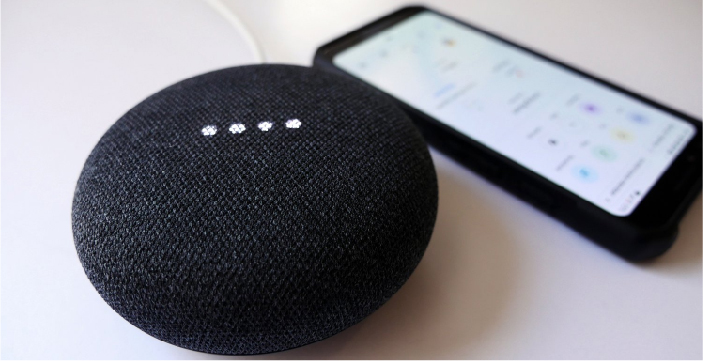Introduction
Voice Search is a common technology that we use every day. It is present in our smartphones, our laptops and even in our home voice assistance systems like Amazon Echo and more
But many seem not to fathom the power of voice search. Many don’t realize how businesses can take advantage of voice search to promote any products or services.
So, in this guide, we will be learning all about voice search!
We will be discussing:
- What voice search is and what its benefits are
- Voice SEO and how voice search is different from traditional search
- How to optimize your page for voice search
Let’s begin!
What is voice search?
Imagine you’re at your home and you’re busy in the kitchen cooking something good for the family.
As you are cooking, you realize you’ve forgotten some of the instructions to cook the dish, but you can’t reach your phone, so how do you find the rest of the instructions?
This is where voice search comes into play!
With voice search, you can carry out a search on your internet browser, on your phone, or on any application with the use of voice-enabled commands.
In its simplest form, it includes an open-domain short keyword search to find any information on the internet. Alexa, Siri and Google stand among the voice assistants that support voice searches.

Let’s jump back to the cooking scenario.
You can now just say “Hey Google (Or Siri if you’re an Apple fan) send me the recipe to make this dish”, your mobile voice assistant will be able to provide you with the information very quickly! Isn’t that easy?
Voice search is integrated into many voice assistants like Google Assistant, Siri, and many other products like Google Nest or Amazon Echo.
Benefits of Voice Search
Purchase by voice is a new way to shop, and its popularity continues to grow.
According to the Market Research Report, the global conversational AI market, including chatbots and intelligent virtual assistants, is expected to grow at a CAGR (Compound Annual Growth Rate) of 22% during 2020–25, reaching almost US$14 billion by 2025.
Shopping is the third most popular use of smart speakers and nearly a quarter of voice assistant users report making a purchase using their device and Amazon reports Alexa use for purchases tripled over Christmas 2018, compared to 2017.
Two factors are contributing to this surge.
First, When it comes to voice shopping, it is simply faster than using a screen-based device.
In several big supermarkets, Alexa Skills let you add items to your shopping basket by simply asking, which greatly speeds up the usually tedious weekly shopping process.

Second, Voice shopping has no barriers.
By using voice technology instead of getting your phone out of your pocket, unlocking it, finding an app, and waiting for it to load, you can make purchases in a heartbeat.
A huge benefit of voice shopping is that it reduces friction between customers and products.
However, there is still a question of benefits. How can the addition of voice functionality to an e-commerce site benefit the business?
Let’s find out!
It is perfect for cross-selling.
As voice interactions are so natural, relaxed, and comfortable, customers are far more likely to take you up on a special offer.
Picture the scene: you’re about to finalize your shopping order when the voice from your Alexa says, “Would you like to try our new chocolate mousse – it’s just $1 with this purchase.” Would you say no?
Of course, you wouldn’t!
Helps you personalize the customer journey.
You can get a lot of information from how your customer sounds.
Are they male or female? Young or old? All this data can help you provide them with a more personalized shopping experience that’s going to keep them coming back for more.
Voice search ultimately helps in providing a unique personalized experience for its users and in a way, makes their lives a little easier.

Where can we find voice search around us?
Voice search can be found all around us: it is present in our smartphones, cars, laptops, computers, home voice assistants, and more!
Let’s see where we can find voice search in our everyday lives.
Digital Voice Assistants
Voice assistants like Google Assistant or Apple Siri all have voice search features integrated into their systems so that you don’t need to take out your phone and search for anything manually. You can just ask your voice assistant and it can help you find the information you need.

In-car voice assistants
Imagine you’re driving on the freeway and you start to get hungry. You can ask your in-car entertainment system to show you the closest restaurants available just using your voice!
In-car voice assistants like Cerence drive have voice search technologies integrated within them so you can find directions to different destinations, find any information about any location and even change media while you’re on the go.

Retail voice assistants
Retail voice assistants help in finding the right product for you by just using your voice. They would integrate voice assistants bots on their website where you can communicate with the bot and it can help find the best options for you.
Integrating voice assistants on retail websites used to be a difficult task as there would be multiple issues related to development and integration.
With Vocads, developing and integrating voice assistant bots has never been easier thanks to a no-code tool to create and edit voice flows with analytics!
By just copy-pasting a small code, you can easily integrate voice assistance on your website! You can check their demo right below and you can contact them for a demo here!
What is Voice SEO (VSEO)
Just like how important SEO is for blogs, many voice assistants depend on Voice SEO to get the right results.
Voice SEO is about optimizing keywords and keyword phrases for searches using voice.
According to some SEO experts, voice SEO is for websites to appear effectively in searches made through voice assistants as voice assistants provide a straight answer to your question rather than a multitude of answers.
According to Google, 20% Of All Mobile Queries Are Voice-Activated Search
The importance of voice search will increase with the rise in usage because more and more people use mobiles for web searches.
Another important consideration is the inclusion of more conversational capabilities like searches in a voice assistant lake for more and more real conversations.
This approach is called long-tail+, where the plus is for conversational phrases that are added to improve voice referencing.
Microdata, which embeds metadata into the existing code of a web page, also helps optimize websites for voice SEO, as it enables web crawlers, browsers and search engines to better understand the content of a web page.

Difference between voice search and traditional search
Between voice search and traditional search, there are lots of differences as both are very different concepts.
Other than the obvious dissimilarity of using our voice for a voice search (while typing our query in a search engine for a traditional search), there are many other ways in which voice search differs from traditional search.
Let’s go and find out!
Conversational Keywords
If we use our voice to interact with our smart devices, we usually ask for things in a very natural way, as if we were talking to a friend.
In contrast to traditional search, we do not just mix several keywords that indicate our search intent.
However, when we speak to our devices, we expect them to fully understand us. In response, we end up using colloquial-term searches, such as “How do I barbeque at home?”.
Searches for local listings include voice queries
Nearly all verbal searches include the keyword “near me,” as well as questions about time and places like “Where is the closest McDonalds?” or “Where is the nearest fast food restaurant?”.
Ultimately, these results are all displayed in local listings.
It’s unlikely that you haven’t used your voice on your smart device to find places to shop, eat, relax, visit, or do other things.
For your business to be found by such searches, you need an up-to-date Google My Business listing.
Clear search results
The results we get from our voice searches are typically taken from the featured snippets we see at the top of a search result page.
Google, and other search engines, use knowledge graphs and featured snippets to respond to voice searches by speaking the answer.
People who search using their voice usually only get one response because they are looking for a quick answer.
Therefore, search engines provide the most relevant answer to your query, other than Google Maps listings.
Optimization for voice search
If you decide your business should try voice search, here are some good news.
Voice SEO does not go against the general rules of standard search engine optimization.
This means most of the things you do for voice search SEO will improve your website’s overall visibility.
Let’s get into the various tips that will help you optimise your website for voice search.
User intent
To optimize your website for voice search, you must first consider the search intent you are answering. here are four types of user intent: informational, navigational, transactional, and commercial.
In terms of search intent, voice search is the same as traditional search: any keywords that have any of the mentioned intents can be used in traditional research and voice search.
In addition to working on optimizing the written content on your website, make sure you also optimize visual content, Google is looking at alt tags and names to understand how to rank your content.
“Near me” searches
The rise of voice search will affect local search as well.
Many voice searches are specific to a certain location, and searches performed on mobile devices are more likely to be local.
When we look for a store or a service, we often use our voice. Plus, local mobile searches result in a same-day store visit most of the time.
By setting up different and useful information about local listings like FAQs, local business timings, details of available items, and information about different branches, you are helping help voice search devices to provide better information about the local businesses to the users.
Long-tail Keywords research
Since no keyword search tool offers ready-to-use keywords there is a lot of work to be done.
The main job is to transform the “robotic” keywords into natural language.
Using conversational keywords is the most popular voice SEO advice anyone can follow.
This makes sense because there’s a huge difference between how people search when voice typing. For example :
Robotic keyword: best dance studios in Paris
Conversational Keyword: where are the best dance studios in Paris
When you have your long search queries at hand, you don’t need to think about optimizing a separate page for each one. Just sprinkle your content with them.
Google doesn’t need them in the H tags to use them for voice search – they can be retrieved from any part of your content.
You can find the option to collect questions for a given keyword in paid SEO services like Ahrefs or SEMRUSH
But we can use free tools, and a better alternative is AnswerThePublic. It is easy to use, fast and efficient.
Creating Content for Voice Search
When it comes to optimizing for voice search, you need to roll up your sleeves to make your site’s content the best answer to queries.
Create content by using a conversational tone and avoid using techniques that you can afford on your site or blog.
For best results, use simple one-line answers so that it’s easy for Google to use them to respond to voice queries.
Answer your customers’ questions
Find out what interests your target audience by communicating with them and conducting research.
Respond to their questions in writing focusing on single search intent and matching the search intent keywords to the content.
Focus on keywords alone and context
Your content must take into account semantic search, which includes context, user search intent, and the relationship between the words on the page.
Provide your customers with honest answers to their questions, and Google will reward you. It is ideal to incorporate the phrases your customers use to search in your content.
Identify your site’s content by using Schema markup.
Having a good data structure will assist you in getting featured in search results for relevant queries, which helps you become a voice search answer.
Improve readability of questions by marking them up with H2 headers for search engines and people.
From a technical standpoint, make sure your pages load in under 3 seconds.
For local SEO benefits, specify your business locations.
There are often clarifications such as ‘near me’ and ‘in my area’ in voice search queries. For example, if your business is based in Baltimore, you need to make sure that you add keywords to your website that include the city’s name.
As a result, your store will have a better chance of showing up among the results whenever people search for something related to your business in Baltimore.
When you create valuable content for your customers and take care of the above tips, you will increase your chances of becoming an answer to a verbal query.
Multilingual SEO for Voice Search
Google can recognize about 120 languages in voice search. This is where you need to focus on multilingualism by paying more attention to voice search.
People are using voice search in their language, which makes multilingual SEO relevant right now. If you don’t do this, people who search in their native language won’t be able to find your website.
Let’s focus on what you can do to meet the needs of your multilingual customers.
Perform a keyword search in each supported language.
For multilingual SEO, it is crucial to research keywords for each language in which you are posting your content.
Pay attention to the volume of keyword research and level of competition.
Hreflang annotations
This helps Google and other search engines understand which page visitors should see.
Hreflang allows English speakers to view the website in its English version and Spanish speakers to view it in its Spanish shape.
Multilingual SEO requires you to create different pages under a single domain.
General SEO for voice search
For voice search optimization, you need a full package of the basic SEO setups. The higher a page is ranked (the best is to get into Google top 3), the better its chances of becoming a voice search answer. Pay particular attention to:
Indexing and crawling possibilities for pages on your website. Make sure your Google Robot can access all the pages you need.
Page speed. The pages displayed as a result of voice search are more than 50% faster than the average web page.
Use of Google’s PWA (Progressive Web Apps) platform. It is believed that this will increase the likelihood that the voice assistant will cite the website.
Mobile friendly. There are many reasons to focus on this, including Google.
Mobile-First Indexing and the fact that people do most voice searches on their smartphones.
Conclusion
And there you have it!
Voice search can bring in better customers and helps project your business more efficiently when people lookup for information by talking to their devices.
Let us know what you think about this article by commenting down below.
And don’t forget to share this article!
